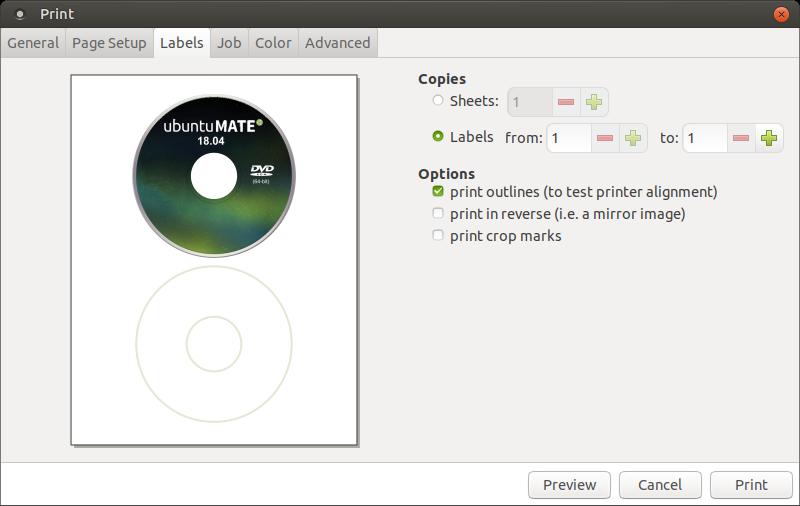
- #Cd dvd creator ubuntu how to
- #Cd dvd creator ubuntu install
- #Cd dvd creator ubuntu software
- #Cd dvd creator ubuntu Pc
- #Cd dvd creator ubuntu iso
Many Linux distros will come preloaded with various troubleshooting tools specifically for this purpose.
#Cd dvd creator ubuntu Pc
If your PC is having problems, you can boot directly into a live CD and use troubleshooting utilities to diagnose the issue. Other common uses for live file systems include troubleshooting, data recovery, and the like. Once you’re done, you can exit and discard all changes or choose to proceed with installing to hard disk. You can use Ubuntu like normal to get a feel for it by using the live file system. For example, Ubuntu gives you an option during installation to try out the operating system first. Live file systems can have a variety of purposes. When you boot to a live CD/DVD/USB, system files and everything else are stored temporarily in RAM, and RAM is always cleared when a system shuts down or reboots. With a live file system, changes you make normally aren’t saved after a reboot. This is called a “live file system” and it allows you to boot into Linux like normal from a CD, DVD, or USB drive. For some Linux distros, this is actually their main purpose.
#Cd dvd creator ubuntu install
Many Linux distributions offer an environment that you can boot your computer into without having to install anything to a hard drive. Furthermore, you’ll be given the information you need to make a decision about which one to use, as well as the links to the official Linux downloads pages for each Linux distribution. If you are a novice user, I recommend you always do it with graphical programs and leave the terminal for more advanced users.In this article, we’ll cover and compare some of the most popular Linux distributions to use for a live CD/DVD.
#Cd dvd creator ubuntu iso
There are several ways to work with ISO images in Linux Mint. So, that is how you can burn an ISO image on Linux Mint. Finally, the sync command is used to flush the cached data to the USB thumb drive so that no data is lost. status=progress will show a progress bar. of defines the USB thumb drive to which the image will be written. bs=2M tells dd to do the transfer in blocks of 2 MB. Here, dd is the command that writes the ISO image to the USB thumb drive. Also, make sure that there are no important files on your USB thumb drive. Replace with the path of the USB thumb drive (i.e. NOTE: Replace with the location of an ISO image of your desired Linux distribution. $ sudo dd bs=2M if= of= status=progress & sync In addition, it also comes up with some unique and cool features that offers simple process of creating ISO quickly.
#Cd dvd creator ubuntu software
Brasero is a part of the GNOME Software Family that’s designed carefully to become as user-friendly as possible to burn CD/DVD. For now, I will introduce you to two tools to do it without problems.įirst of all, there is Brasero. For it, you must have clear where you want to burn the image, you can do it even in a CD or DVD or simply use the USB memory stick. So, I will start from the fact that you want to burn an ISO of a Linux distribution using Linux Mint. What many people do is use USB flash drives to improve the system’s runtime or just copy them as backup to that drive. You can still do it, but it is an obsolete practice. So far, I have talked about burning an image to a CD or DVD. Moreover, ISO is also a better format for sharing larger programs via the internet because all the files and folders remain in one, single chunk that offers better data integrity. It’s possible to duplicate all the data of a CD/DVD or other discs PRECISELY (bit by bit) and dump them into an image file, most notably, an ISO file. An ISO file is a perfect representation of a CD, DVD or a complete BD. If you are a newbie, it is important that you know where it comes from. The first thing we need to be clear about is what an ISO image is.
#Cd dvd creator ubuntu how to
So, that is why this article will teach you how to burn an ISO on Linux Mint. That is to say, a DVD was equal to an operating system. With the appearance of the DVDs, the controversy moved to another point, the impossibility of reusing them for something else. I remember, for example, the first controversies with Debian and Ubuntu about the distribution of their ISO images. However, as the operating systems added new features and novelties, the space available for these CDs began to cause problems for the developers. The image was downloaded and then inserted into the computer and the process began.

Some time ago, it was very common to install operating systems from a CD.


 0 kommentar(er)
0 kommentar(er)
